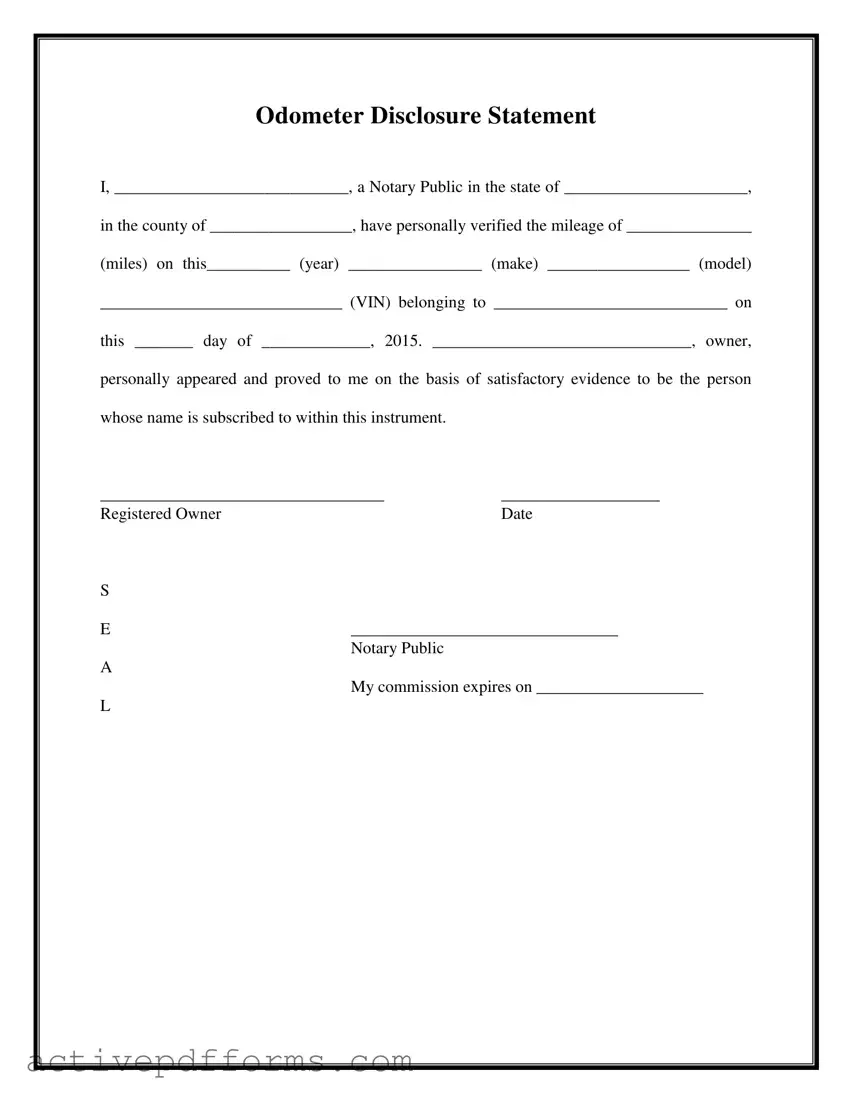Free Notarized Odometer Statement PDF Template
A Notarized Odometer Statement form serves as an official document for verifying a vehicle's mileage, confirmed by a Notary Public. This form is crucial when buying or selling a vehicle, as it provides a certified record of the car's actual mileage, ensuring transparency and honesty in the transaction. By documenting the vehicle's year, make, model, VIN, and the verified mileage, this statement protects both parties from potential disputes.
Edit Notarized Odometer Statement Now

